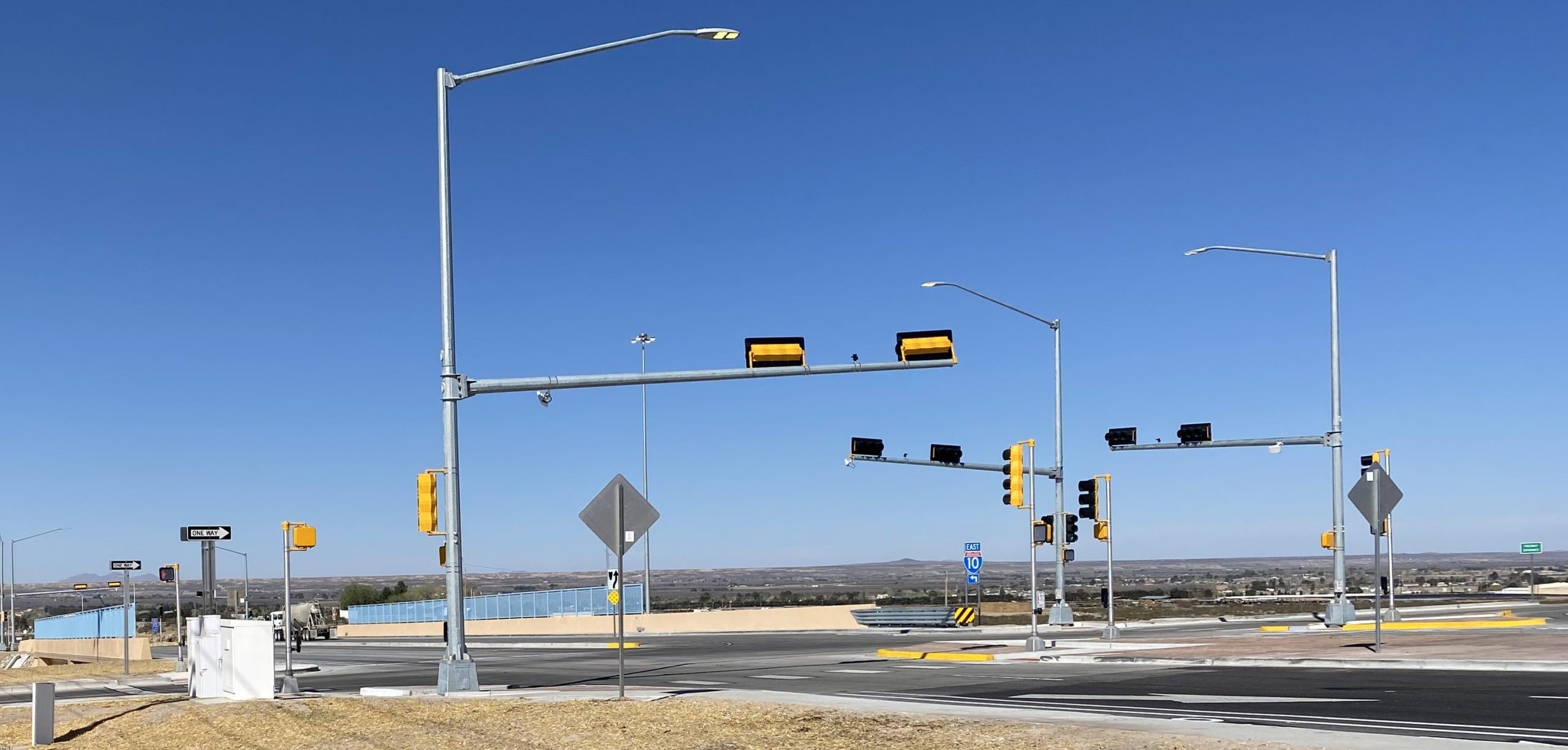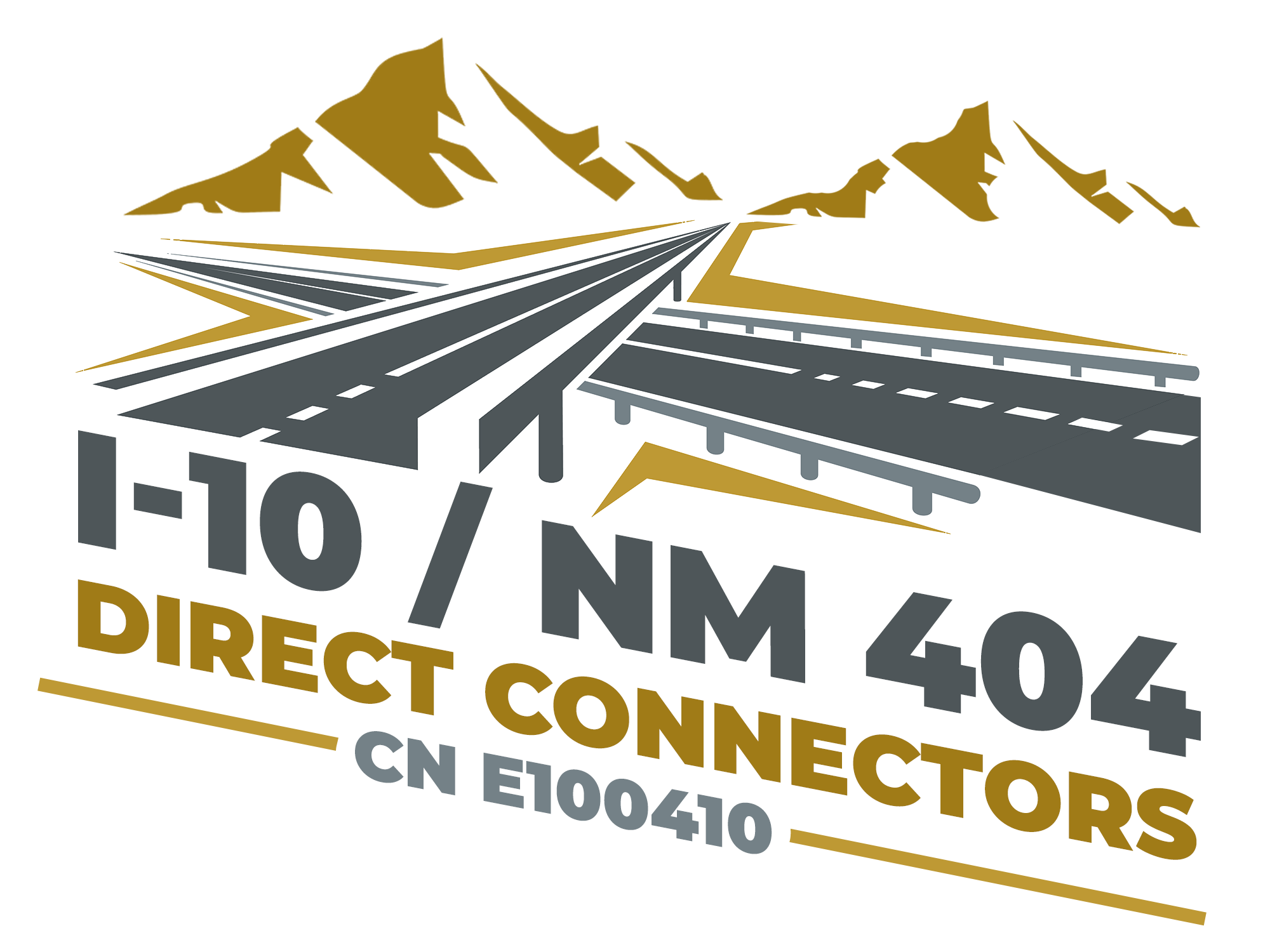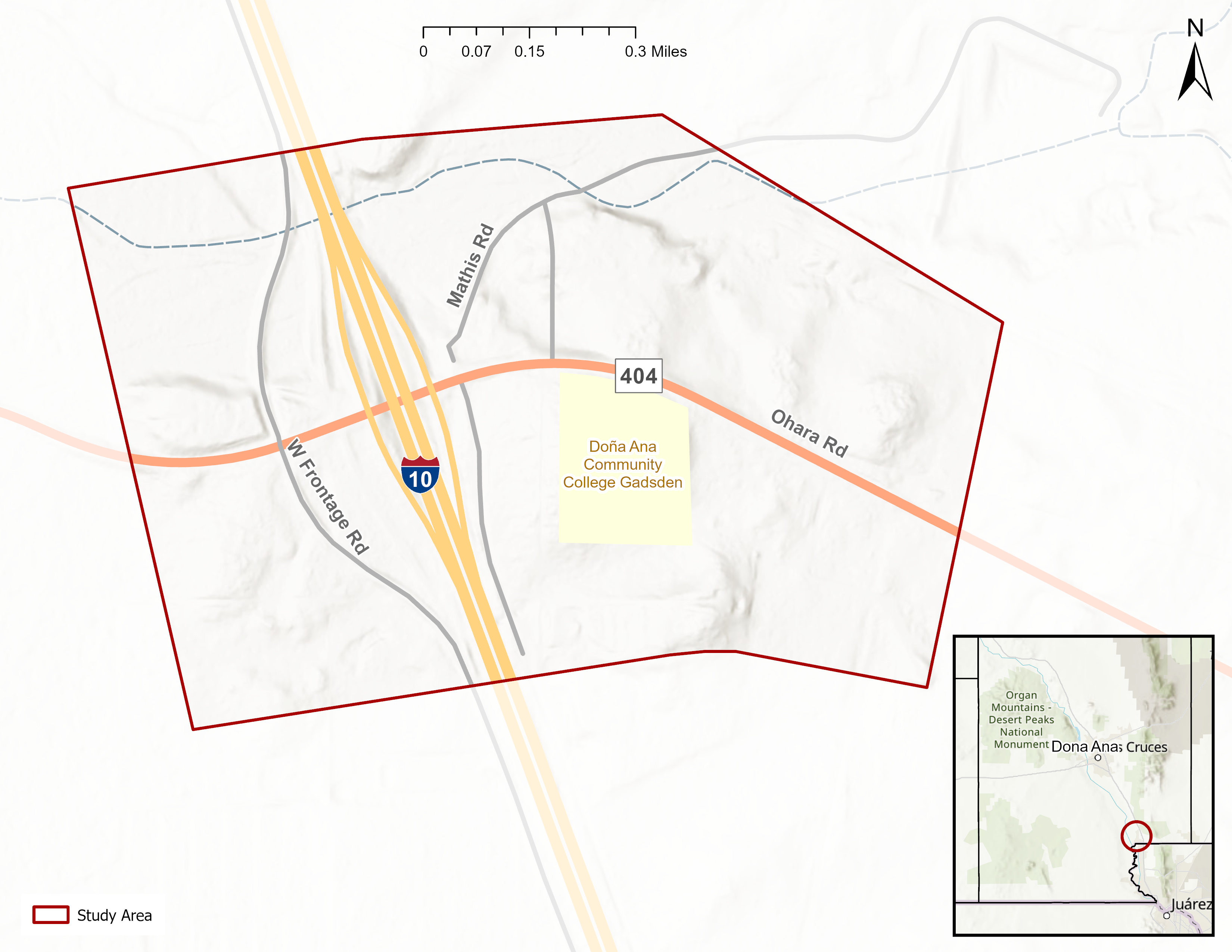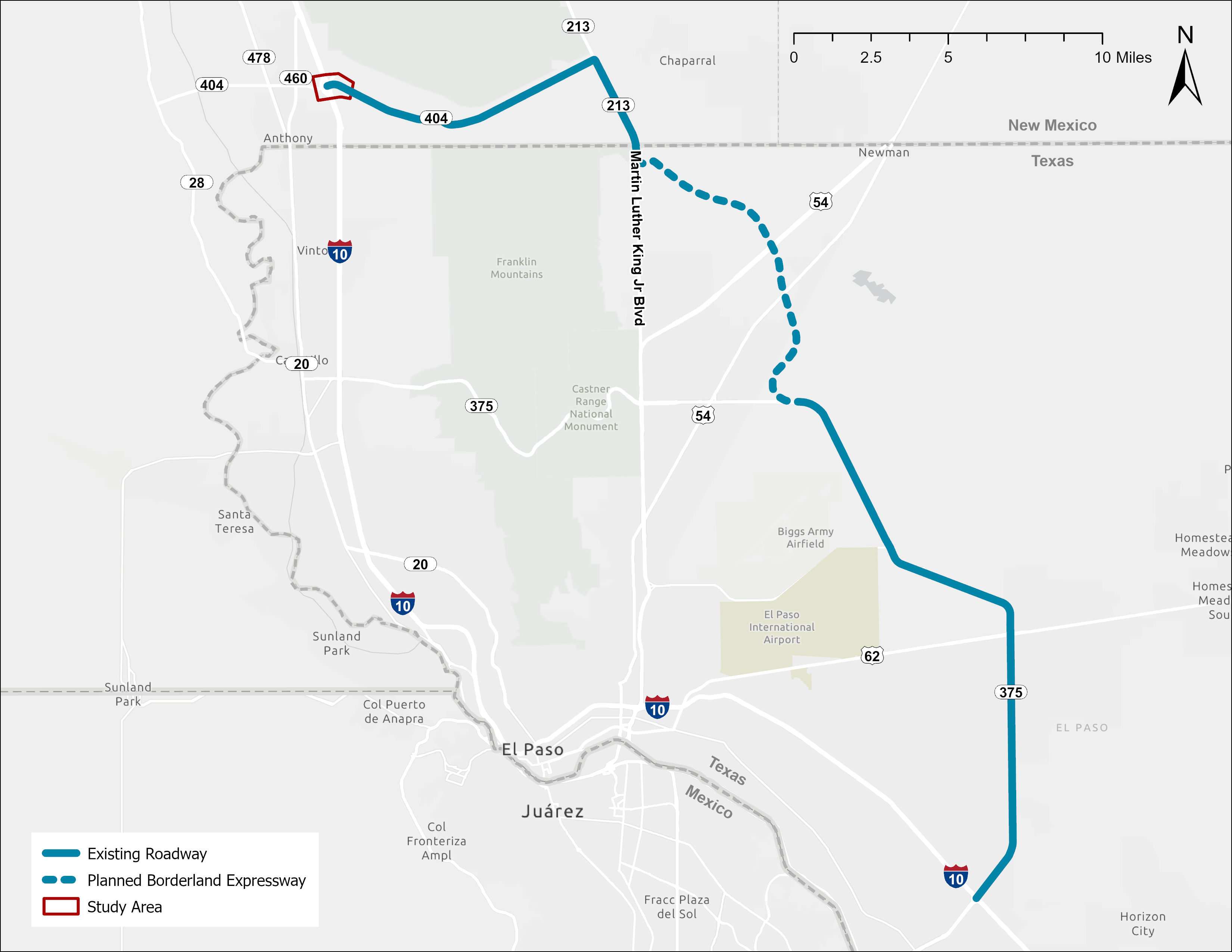Direct Connectors I-10/NM 404 Interchange
Phase 1-A/B StudyDoña Ana County, New Mexico
STUDY OVERVIEW
The Direct Connectors Interstate-10 (I-10) and NM Highway 404 (NM 404) Interchange Phase I-A/B Study (Direct Connectors Study) was initiated by the New Mexico Department of Transportation (NMDOT) in cooperation with the Federal Highway Administration. The Study Area is located along I-10 between mile markers 162.5 and 163 and NM 404 between mile markers 0.5 and 1.5 in Doña Ana County (Figure 1). The primary purpose of the Direct Connectors Study is to evaluate the need and understand the requirements and anticipated timeframe to warrant the construction of direct connector ramps to allow traffic to flow freely between I-10 and NM 404.
Background Information
NM 404 is a critical transportation corridor designated as a NMDOT Critical Rural Freight Corridor, playing an essential role in connecting the New Mexico/Texas border region. It facilitates freight movement and travel to key destinations such as the Franklin Mountains, the White Sands Missile Range, and the Fort Bliss Military Training Area. Additionally, NM 404 serves local communities like Chaparral, NM, which houses the Doña Ana Community College Chaparral Learning Center, and Anthony, NM, home to the Gadsden Center.
The highway provides vital connectivity to I-10 and acts as an alternative route between New Mexico and Texas, alleviating congestion in urban El Paso. This route is particularly important for commercial traffic and travelers, ensuring smooth transit without the delays often encountered on I-10 through El Paso.
The Texas Department of Transportation’s development of the Borderland Expressway (Borderland XPWY) will further enhance freight, military, and commuter travel by offering a bypass around El Paso’s urban core (Figure 2). This new route is expected to reduce congestion on I-10 and improve overall traffic flow, benefiting both local economies and regional transportation networks.
In light of these developments, ensuring the safety and efficiency of the interchange between I-10 and NM 404 remains crucial for maintaining seamless connectivity and supporting economic growth in the region.

History
Initial consideration for an inter-regional alternative connector began in 2002 under the name Northeast Parkway. A timeline provided below shows related studies and roadway improvements in the region demonstrating the progression of efforts to create this connector.
County
Doña Ana
District
District 1
STIP Number
Status
Study and Design
Contact
Mark Salazar
South Region Design Development Engineer
(575) 888-7146
PROJECT RESOURCES
What has been done so far?
The NMDOT recently expanded NM 404 and is currently designing additional corridor improvements. These improvements will include a free-flowing interchange at NM 404 and NM 213 and capacity upgrades to NM 213. The combination of these road expansion projects and the development of the Borderland XPWY, is expected to increase traffic volumes, particularly truck traffic, by 2040.
These enhancements are expected to improve travel efficiency between New Mexico and Texas, offering more effective travel options across alternative routes in and around the El Paso region. This will facilitate smoother and more efficient movement of goods and people, addressing future growth in cross-country and regional traffic.
A Recent History of I-10 & NM 404
Timeline
2002 BORDERLAND XPWY (Planning Phase)
• TxDOT studied alternative routes to bypass El Paso’s congested I-10 stretch, focusing on freight and regional traffic to connections between NM and TX.
2003 BORDERLAND XPWY (Planning Phase)
• A follow-up study evaluated alignment options for the potential connector. Two of three final alternatives used NM 404 to connect to I-10 in New Mexico (formerly the NE Parkway).
2007 I-10 Corridor (Planning Phase)
• An NMDOT study identified potential improvements along I-10 from Las Cruces to the TX border and deficiencies at the I-10/NM 404 interchange.
2010: I-10 & NM 404 (Construction Phase)
• NMDOT constructs improvements at I-10/404 interchange, including western frontage road relocation and addition of pedestrian facilities.
2017: NM 404 (Planning Phase)
• An NMDOT study identified improvements to address safety and congestion issues along NM 404, including the I-10 interchange.
2018: Borderland XPWY (Planning Phase)
• TXDOT refined Borderland Expressway alternatives and advanced to design.
2019: I-10 & NM 404 (construction Phase)
• NMDOT constructs improvements at I-10/NM 404 interchange, including signalization, bridge widening, and eastern frontage road realignment.
2023: NM 404 & NM 213 (Planning Phase)
• NMDOT completes a study for NM 404 and NM 213. The recommended alternative included the expansion of NM 213 and improvements at the NM 213/404 intersection. The alternative was advanced to design.
2024: BORDERLAND XPWY (Construction Phase)
• TXDOT completes Phase 1 construction of the Borderland XPWY and continues progress on the construction of future phases.
2024: NM 404 (Construction Phase)
• NM 404 is expanded to a 4-lane highway between I-10 and NM 213.
2025: I-10 & NM 404 (Planning Phase)
• NMDOT begins the Direct Connectors Study to plan for future traffic demands that may be stimulated by improvements on NM 404 and NM 213 and construction of the Borderland XPWY.



